The Pine Creek limestone is a named marine layer that lies above the Brush Creek limestone. It consists locally of dark-colored limestone with abundant fossils. As of this writing, I have not found any in Parks Township, but it does exist a dozen miles northwest in the Kittanning area. I have found fossils in this stratum and also broke apart boulders in search of fossils.
Just as road names can change at the Pennsylvania / Ohio state border, so does the name of the Pine Creek limestone. There it is known as the Upper Brush Creek limestone. The Brush Creek limestone in Pennsylvanian is called the Lower Brush Creek Limestone in Ohio. It correlates nationally with the Shoal Creek in Illinois and the Swope or Hushpuckney Limestone in the Mid-continent United States.
E. B. Andrews named the Cambridge Limestone in 1873, and I. C. White named both the Pine Creek and Brush Creek limestones five years later in 1878. For quite some time, local geologists considered the Cambridge to be the same as these two limestones, and in 1903 these layers were named the Lower and Upper Cambridge in West Virginia. However, in 1984, Busch correlated the Cambridge of Ohio with the Nadine limestone in Pennsylvania. Later conodont-based research confirmed this further, with P. H. Heckel proving that Ohio’s Cambridge was, in fact, the Nadine in Pennsylvania, using conodont fossils.
Some mysteries still to be solved.
Apparently, there is a mica layer in the shale below the Pine Creek locally. This has been confirmed in samples from both Allegheny and Westmoreland counties. It could be that this is the eroded and chemically altered remnant of an ash fall, which is evidence of a volcanic eruption that coated the landscape with ash. However, the material has not been appropriately tested.
Correlation of Glenshaw marine zones
Over the past century, several authors have helped define the correlation between the various marine zones across the country. The thought is, during times of excessive warmth, ice on Earth would melt and create high sea levels. These areas were flooded by an invading sea, creating warm shallow water in which limestone was deposited. These areas were situated near the Earth’s equator at the time, so it was easy for these waters to be warm.
The areas in the table below all received seawater at nearly the same time, and new rock-forming sediments were deposited. While much has happened over the 300 million years since they were laid down, conodonts and other marine fossils found within helped correlate these across hundreds of miles in the United States.
I did a spot review on a single stratum, the Shoal Creek, and found that this name has been discontinued in favor of Carthage. So while the names were accurate from the correlation papers I read, the names may very well be different in modern use.
| OK KS MO NE IA | IL | OH | PA |
|---|---|---|---|
| Oread | Heebner | Shumway | Ames | Ames |
| Lola | Muncie Creek | Millersville | Portersville | Woods Run |
| Dewey | Quiviro | Fithian | Cambridge | Nadine |
| Dennis | Stark | Shoal Creek / Carthage | Upper Brush Creek | Pine Creek |
| Swope | Hushpuckney | Macoupin | Lower Brush Creek | Brush Creek |
The Pine Creek situated within the Glenshaw
There are differing opinions about where the Upper Pennsylvanian / Missourian State starts or ends within the Glenshaw formation. However, it’s pretty clear where the Pine Creek limestone rests. It is one of three laterally extensive limestone layers in southwestern Pennsylvania. It is found above the Brush Creek limestone. The Cambridge and Woods Run limestones can and have been mistaken for it, but there are places locally where they are not recognized.
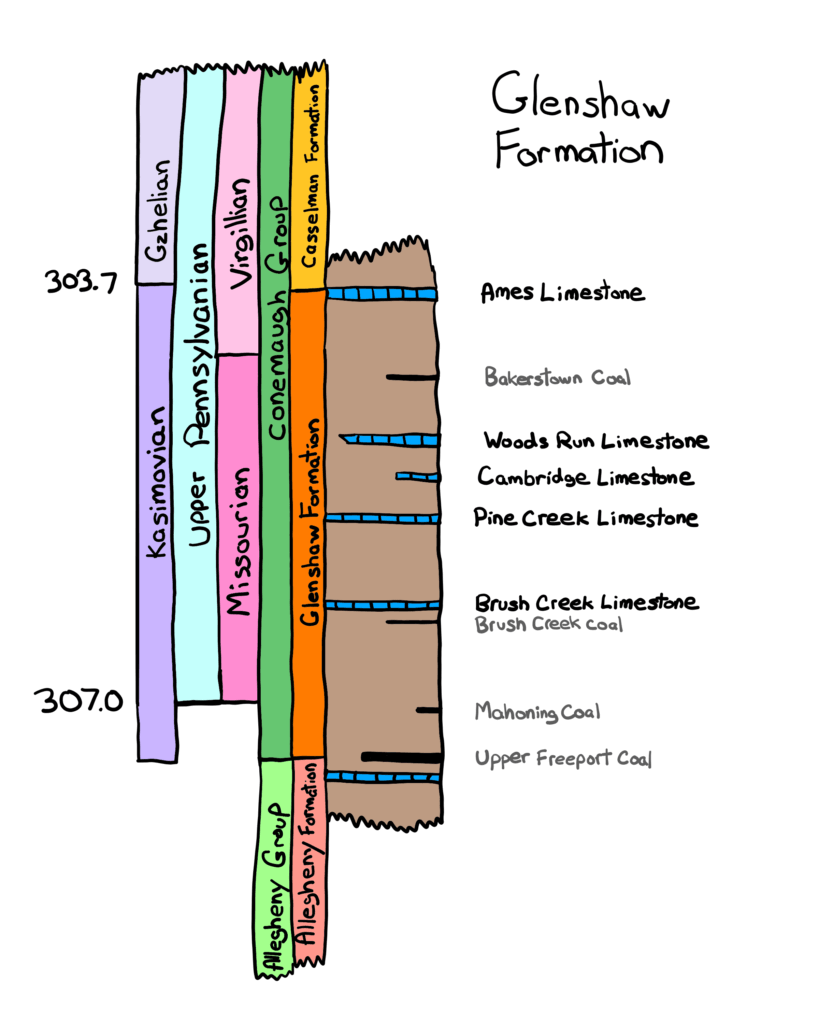
Pine Creek Limestone Fossils
The location I have collected from has yielded a large variety of fossils that I also find in the Brush Creek limestone of Parks Township. However, the Pine Creek is much more fissile than the Brush Creek, being easier to split. As a result, the preserved aragonite appears to have a bright chalky color compared to Brush Creek shell material.
There are many more corals and gastropods than in the Brush Creek. These are hard to recover locally, but beautiful specimens exist in the Pine Creek. Cephalopods can be found, but they are very fragile. While I am more likely to find intact shell pieces, solid steinkerns are lacking. I’ve had an easier time finding trilobites. I’ve also recovered a Petalodus tooth. The preserved fossilized enamel was black. Brush Creek specimens are a gray color.
Below is a gallery of some fossil specimens I have recovered from the Pine Creek limestone thus far.
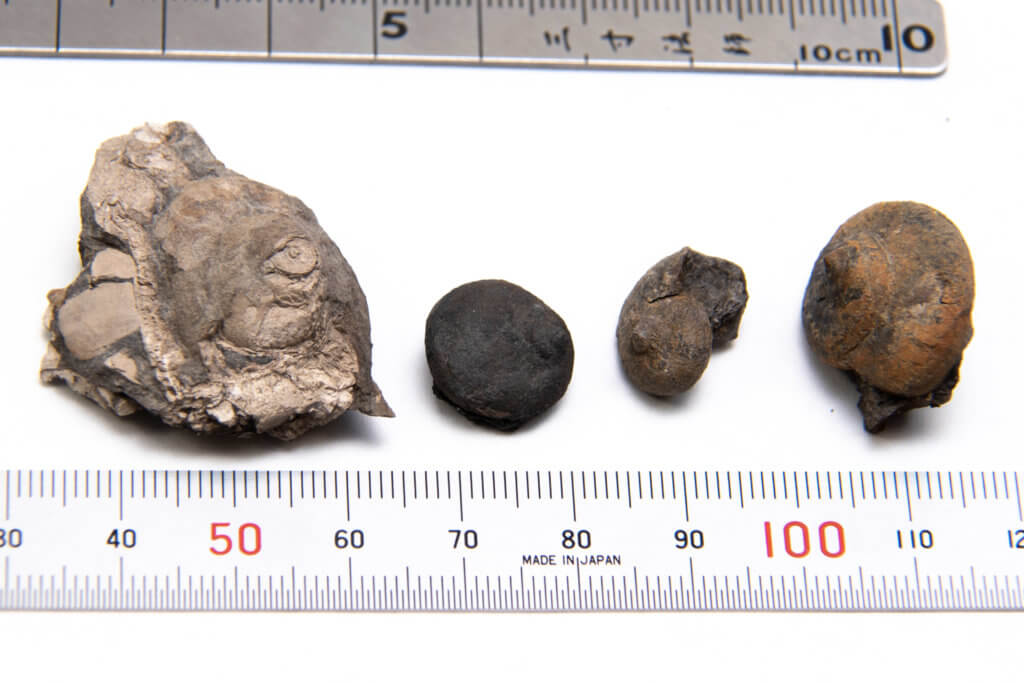
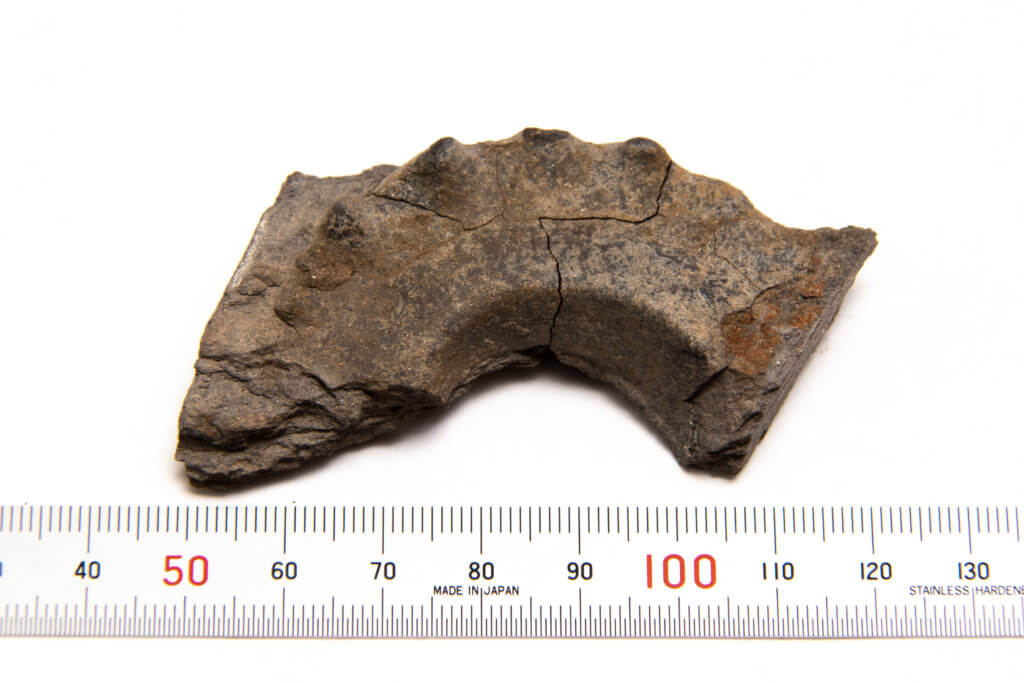

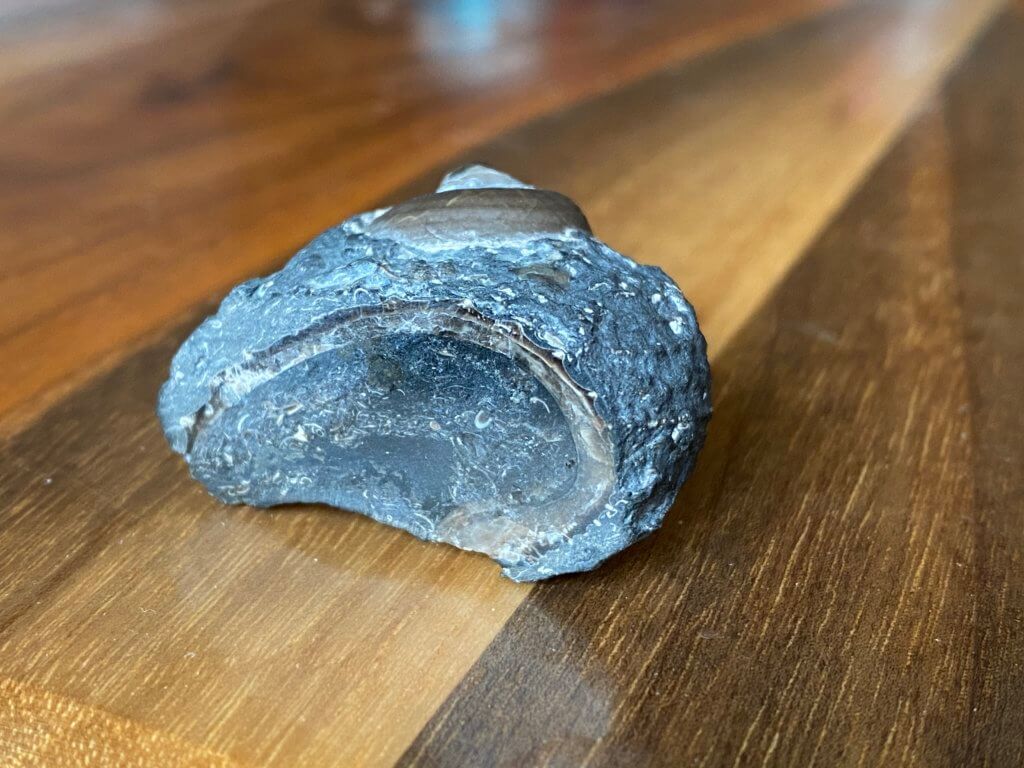
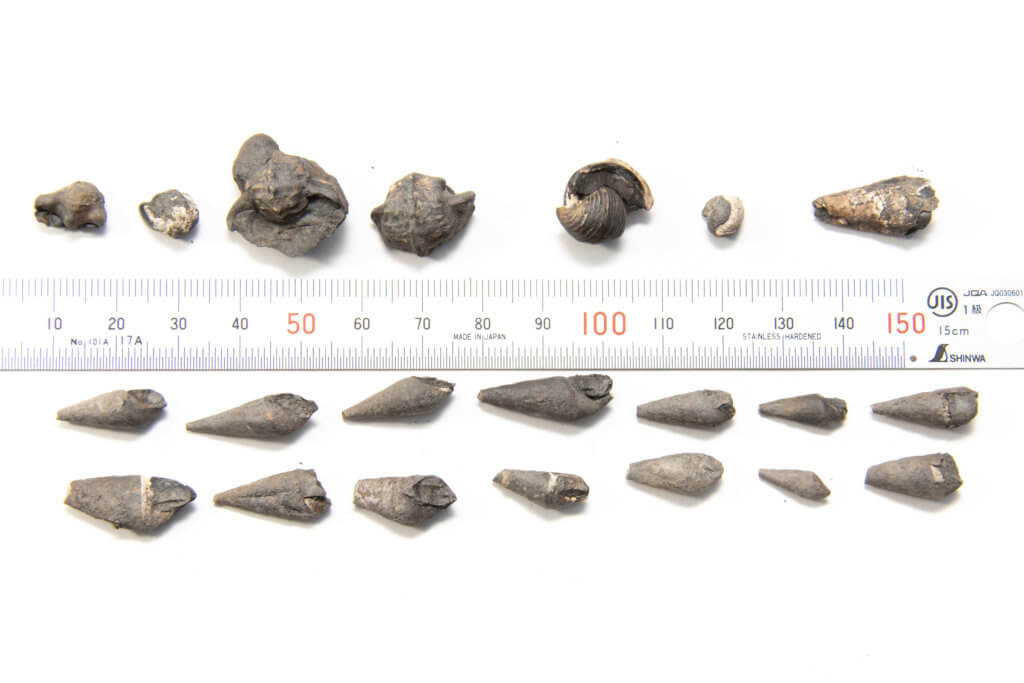
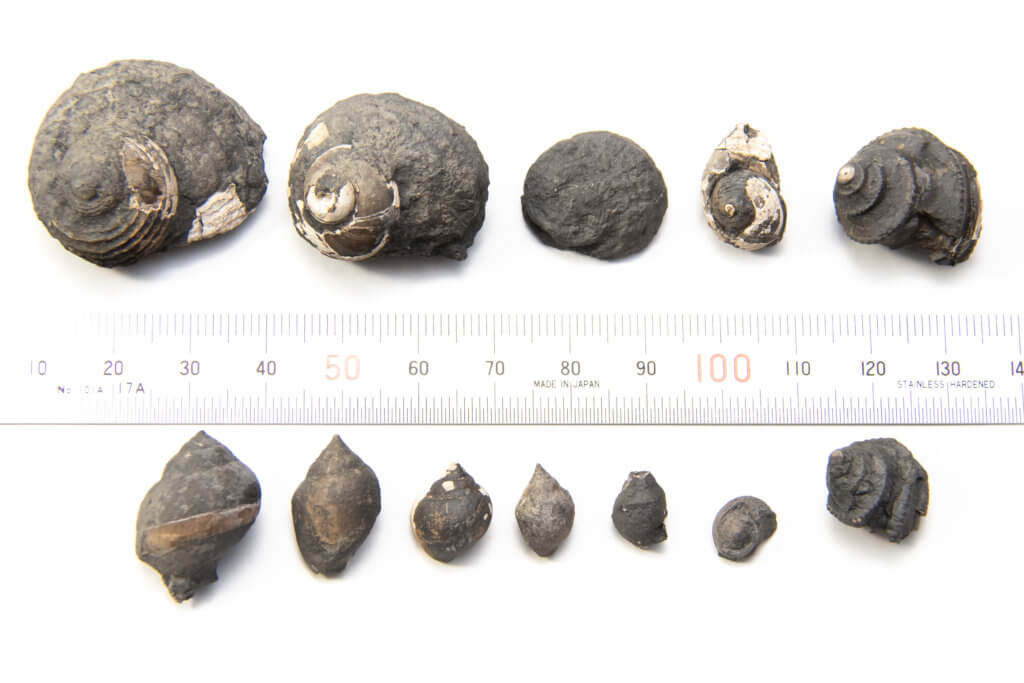


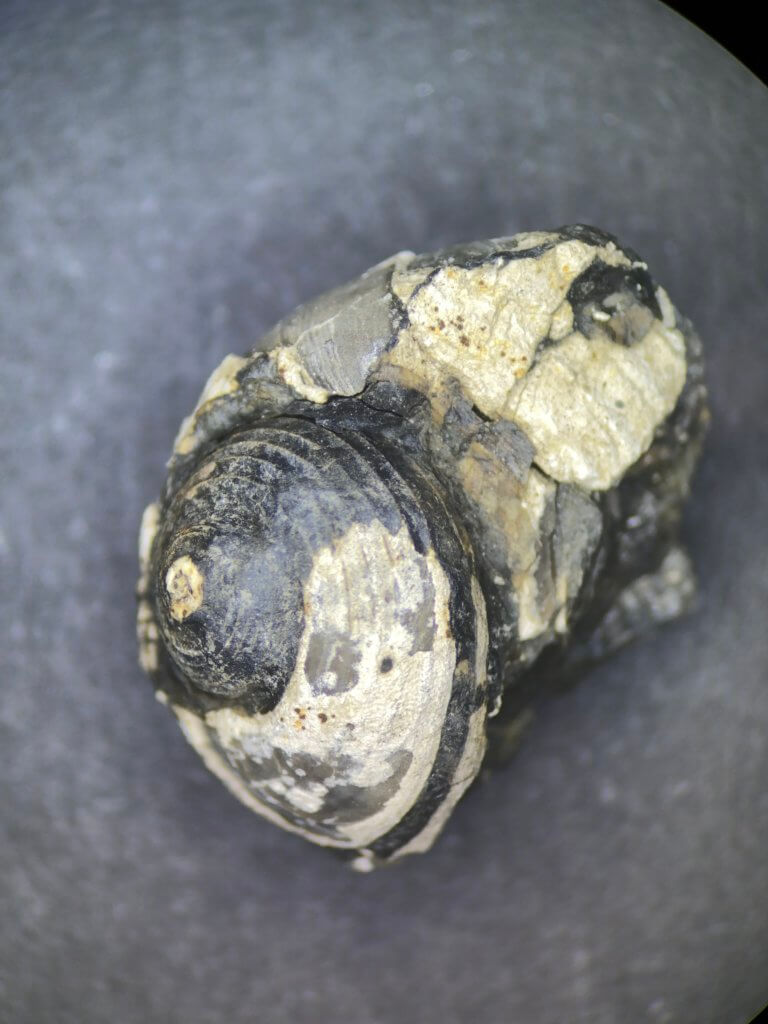
The Pine Creek Elsewhere
The limestone becomes more oolitic towards the West. Oolitic means composed of larger rounded grains, 0.25-2mm in thickness.
References
- Andrews, E. B., 1873, Geology of Athens County, Chapter X, in Report of the Geological Survey of Ohio, Part I, Geology. Ohio Geological Survey, Report of Progress, 2nd series, v. 1, p. 261-293.
- Busch, R.M. and Rollins, H.B., 1984, Correlation of Carboniferous strata using a hierarchy of transgressive–regressive units: Geology, v. 12, p. 471-474.
- Carr, D.D., Archived 2020, Carthage Limestone Member, Indiana Geological and Water Survey, Website
- Harper, J. A., 2016, Some geological considerations of the marine rocks of the Glenshaw Formation (Upper Pennsylvanian, Conemaugh Group), in Anthony, R., ed., Energy and environments: Geology in the “Nether World” of Indiana County, Pennsylvania. Guidebook, 81st Annual Field Conference of Pennsylvania Geologists, Indiana, PA, p. 47-62.
- Heckel, P.H., Barrick, J.E., and Rosscoe, S.J., 2011, Conodont-based correlation of marine units in lower Conemaugh Group (Late Pennsylvanian) in Northern Appalachian Basin: Stratigraphy, v. 8, p. 253-269.
- Perera, S.N., Stigall, A.L., 2018, Identifying hierarchical spatial patterns within paleocommunities: An example from the Upper Pennsylvanian Ames Limestone of the Appalachian Basin – Palaeogeography, Palaeoclimatology, Palaeoecology V. 506, p. 1-11
- White, I. C., 1878. Report of progress in the Beaver River district of the bituminous coal fields of western Pennsylvania. Middletown: Pennsylvania Geological Survey. 2nd Series, Report Q, 337 p.
Thank you kindly to John A. Harper for helping me to edit this article for accuracy and format.
